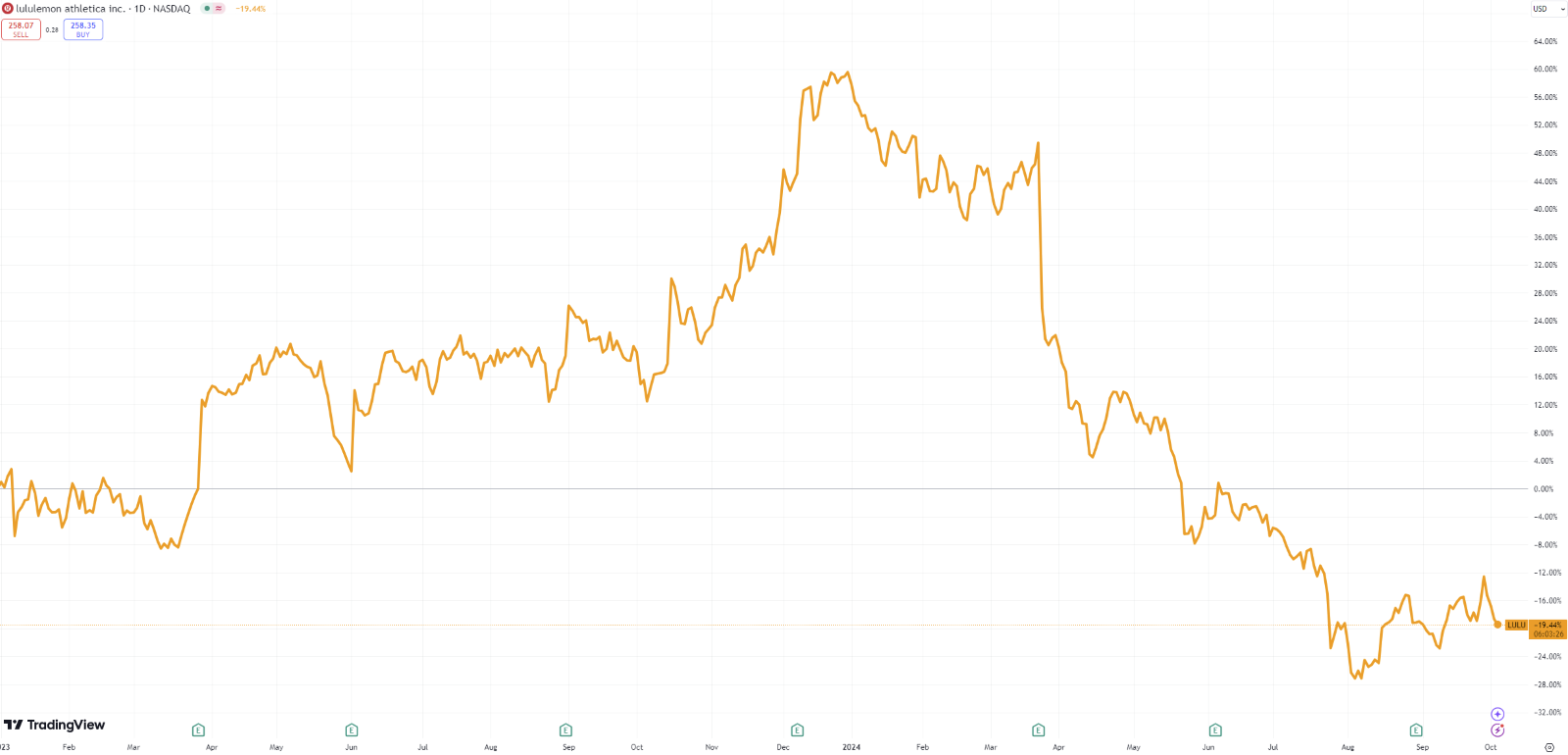Ever wondered why Lululemon’s yoga pants are pricier than Adidas and Nike’s? It’s a question not just for curious shoppers, but increasingly for investors too.
The premium sportswear maker has had a rough year, with its stock plunging more than 48% and wiping out all of 2023’s gains. It’s now the Nasdaq 100’s third-worst performer.
Lululemon’s balance sheet might have looked solid for a while, but global revenue growth has been slowing over the past two years. What’s more, the company cut its revenue forecast for the rest of the year in August, piling more pressure on the stock.
Not a good look
- Sales in the US, Lululemon’s biggest market, have been down every month in 2024 compared to last year, with a drop of 4% for the year as of early September, according to Deutsche Bank.
- A Morgan Stanley survey found Lululemon ranked the lowest on value-for-money among Chinese respondents — worse than Fila, Adidas, Nike and other local brands. (Side note: it’s much more expensive as well).
China is key. In 2023, it accounted for 10% of the company’s total revenue, making it the second-largest market after the Americas. China also boasts the second-highest number of Lululemon stores globally (127), with most new openings in 2024 expected there as well.
Premium brands like Lululemon have thrived in China thanks to their niche appeal, making China the brand’s top growth driver by revenue last year. But as Chinese consumers grow more value-conscious amid an economic slowdown, Lululemon’s low value-for-money ranking doesn’t bode well for it. This could put real pressure on revenue.
The stock this year:

Pick or pass?
It’s not all bad, though. Lululemon’s total revenue is still forecast to keep growing, and there could be money to be made for investors.
- Morgan Stanley has a 12-month price target of $314, suggesting a potential upside of nearly 20% from current levels. JP Morgan and Bank of America are even more bullish, with all three maintaining “buy” ratings for the stock.
- Analyst consensus at Refinitiv is also a “buy” and implies a similar upside.
- Lululemon’s forward price-to-earnings ratio sits at 17.8 times, relatively cheap compared to Nike’s 27.5 and Adidas’ 36.7, with the industry average at 26.5. If these forecasts play out, current levels could be an attractive entry point.






